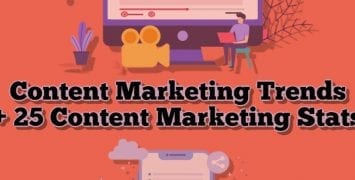Quality content is the cornerstone of any effective SEO campaign. Your web pages, blog posts, social media messages and more all work together to help define your brand. But how do you know when your content is connecting with readers?
Most analysis of reader engagement is imperfect.
You can track sales, but not all content is designed to elicit a purchase. Many times, content is created as part of a Conversion Funnel. Content introduces your brand, helps establish authority and overall creates a connection between you and your potential customers. This type of content isn’t supposed to drive sales directly, so hard sales numbers aren’t going to reflect the content’s effectiveness.
You can also track social media, but this also has some problems. Not every satisfied customer is going to post praise on your social media platforms. In fact, people are more inclined to take to social media when they have a complaint instead of a compliment. So social media feedback can be skewed towards the negative.
The best way to measure reader engagement is with cold, hard data. And the easiest, most accurate way to obtain that data is with Google Analytics. Here’s what to look for:
1. Average Time Spend on Each Page
The basics are pretty simple. If people aren’t interested in your content, they’ll skim through it quickly and move on to something else. But if they find your content useful, they’ll take the time to read it thoroughly.
Google Analytics lets you measure the time spent on your site. The more time spent on each page, the “stickier” that content is. Sticky content is content which draws readers in and holds their attention.
What’s a good number to shoot for? Each person’s reading speed is different. To find out yours, visit myReadSpeed.com. The average person takes about 10 to 15 minutes to read around 1,000 words. Anything in this ballpark is what you’re aiming for.
Within Google Analytics, you want to look for Average Time on Page. This shows how long the average user stays on each page. For a complete breakdown on how this measured, check out Google’s explanation here.
Once you have an idea of what type of content draws the most readers, you’ll want to figure out what each piece has in common. The idea? The writing style? Find that connecting thread, replicate that type of content and repeat your analysis. With time, you’ll be able to zero on exactly what your audience wants to read.
2. Referrals
Here’s the thing about good content: Everybody wants it. So if you create good content which readers respond to, that content will likely be passed around the web. These are Referrals and you want as many as you can get.
Here’s how to view the Referrals metric:
- On the left sidebar in Google Analytics, click on “Acquisition”
- Select “All Traffic”
- Click “Channels”
You should see a table where the first column is labeled “Default Channel Grouping.” This lists all the channels including Social, Direct, Organic Search and – ta-da! – Referrals.
Click Referrals. This will show you how much traffic is coming in from specific sites. But we can go even deeper and learn which specific pages are being linked.
At the top of the table, click on “Secondary Dimension.” Then click “Behavior.” You should see a list of options. In that list, click “Destination Page.”
That’s it. You’ve created a report which shows you the sites which link to yours as well as the specific pages they link to. The list will be in descending order to, with the most often linked content at the top.
3. User Interests
Most likely, people aren’t just stumbling across your website accidentally. They’re searching for some type of information related to your industry. This especially true if you’re a business.
But people are multi-faceted. They have many interests both personally and professionally. When you understand the interests of your audience, you’ll be able to communicate with them more effectively.
Google Analytics has reports available. Here’s what to do:
- On the left sidebar, click on “Audience”
- Select “Interests” from the drop-down menu
- Click “Overview”
You should see a few bar graphs.
The first graph will be the Affinity Category. This a general “lifestyle” category similar to TV audiences. Some examples include Sports Fans, Cooking Enthusiasts and Technophiles.
The second category is an “In-Market Segment.” These are people who are actively looking for a product or service within a specific category such as “Automotive,” “Travel” or “Real Estate.”
Finally, there’s the “Other” graph. According to Google, this measures user interests in a specific way. While the Affinity category notes is a person is a Foodie, the Other category will make additional distinctions such as Recipes/Dinner/Mexican Food.
Final Takeaway
Your users are multi-dimensional people. For them, the product or service you provide is only a small part of their interests. The more you understand your audience, the better you’ll be able to cater to their needs and speak their language.
By using these three simple tools within Google Analytics, you can learn quite a bit about who your users are as people. This can help increase the connection between your brand your target audience.
Got any other tips for increasing reader engagement? Feel free to share them below…




